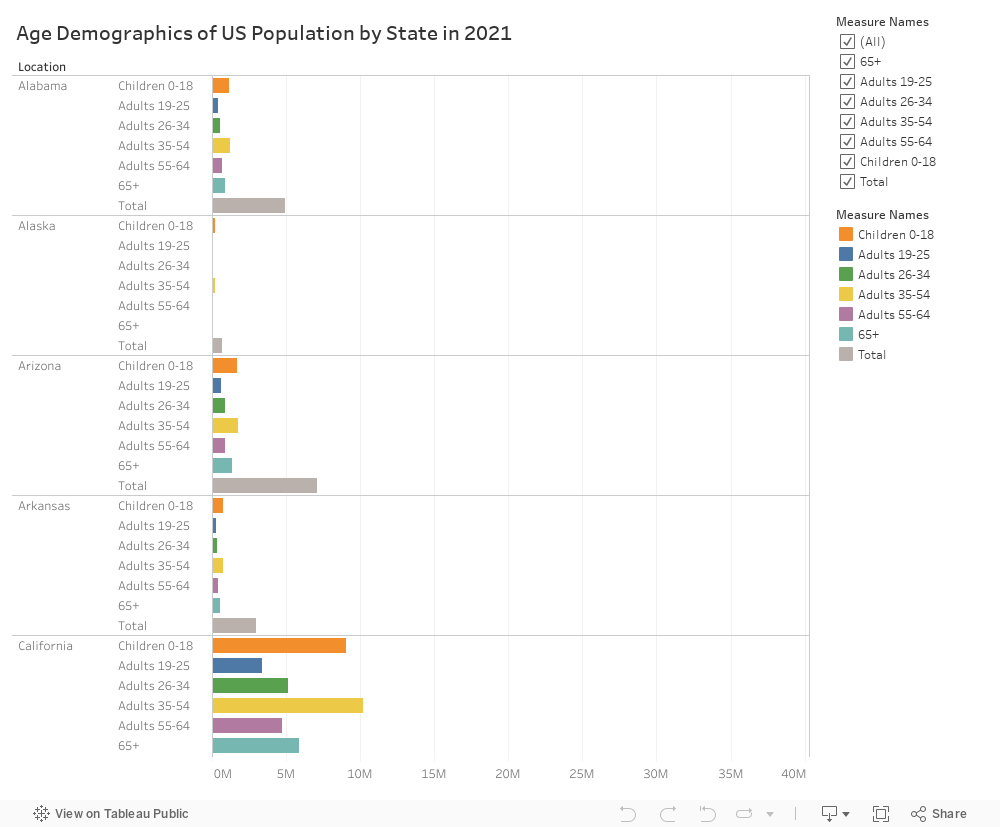From 2020-2022, the US population had less than 0.50% annual population growth rate. From 2020 to 2021, the US population grew by only 0.16%. Then from 2021 to 2022, the US population grew at 0.38%.
According to the Census Bureau, slower population growth in the US has been happening for a few years already.
The primary reasons seen for the decline of population growth since the mid-2010’s were steady decline in births and international migration while deaths have been increasing because of the aging population. On top of that, the impact of the COVID-19 Pandemic amplified the already slowing population growth.
Referenced from Investopedia, a financial media website, a growing population from the working-age group can significantly contribute to a nation’s economic prosperity. While a nation with a declining birth rate coupled with an aging population could pose a degeneration of economic growth in the future.
Below is a presentation of the US Population in 2021 by Age and State
var divElement = document.getElementById(‘viz1683724459853’); var vizElement = divElement.getElementsByTagName(‘object’)[0]; if ( divElement.offsetWidth > 800 ) { vizElement.style.width=’1000px’;vizElement.style.height=’827px’;} else if ( divElement.offsetWidth > 500 ) { vizElement.style.width=’1000px’;vizElement.style.height=’827px’;} else { vizElement.style.width=’100%’;vizElement.style.height=’727px’;} var scriptElement = document.createElement(‘script’); scriptElement.src = ‘https://public.tableau.com/javascripts/api/viz_v1.js’; vizElement.parentNode.insertBefore(scriptElement, vizElement);
Data from tableau were sourced from www.kff.org.
Note: KFF estimates are based on the Census Bureau’s American Community Survey (ACS)
Meanwhile, below is a visual presentation of the The Annual Population for the United States’ Regional States and District of Columbia in 2021
var divElement = document.getElementById(‘viz1683724280358’); var vizElement = divElement.getElementsByTagName(‘object’)[0]; if ( divElement.offsetWidth > 800 ) { vizElement.style.width=’1000px’;vizElement.style.height=’827px’;} else if ( divElement.offsetWidth > 500 ) { vizElement.style.width=’1000px’;vizElement.style.height=’827px’;} else { vizElement.style.width=’100%’;vizElement.style.height=’727px’;} var scriptElement = document.createElement(‘script’); scriptElement.src = ‘https://public.tableau.com/javascripts/api/viz_v1.js’; vizElement.parentNode.insertBefore(scriptElement, vizElement);
Data sourced from www.kff.org

